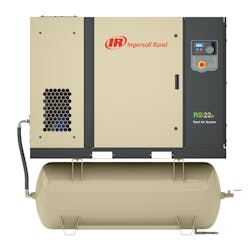Question: What equipment do I need to maintain my compressor’s performance?
Answer:
Proactively protecting a compressed air system is as essential as selecting the right equipment in the first place. Sticking with the original manufacturer (OEM) parts is the best way to prevent premature compressor failure. Non-standard or “will-fit” parts can expose equipment to unnecessary wear and tear that can lead to downtime and higher operating costs.
Regular compressor maintenance doesn’t have to be a big deal. Many vehicle service shops conduct basic maintenance in-house. If that’s the route you want to take here are some tips to consider.
Use high-quality coolant or lubricant
Low lubrication levels prevent compressors from running at peak performance. Without the proper amount of coolant, rotary screw compressors will overheat. It may be time to check your compressor’s coolant levels if the compressor begins to run hot.
When lubrication levels get low, replace it with a high-quality lubricant specifically designed for rotary screw compressors like the Ingersoll Rand Ultra Coolant. Ultra Coolant lasts nearly eight times longer than conventional lubricants to provide up to 8,000 hours of operation. Its unique varnish-free operation helps increase system efficiency to extend the life of your system by helping to eliminate contaminant build-up inside the machine.
Ingersoll Rand synthetic All Season Select is a great choice for reciprocating compressors. It is specially formulated to ensure a long life of the piston rings and valves. Depending on your compressor, these lubricants will aid efficiency and minimize wear on your equipment parts.
Remove moisture with filters and dryers
The best and most reliable compressed air systems have clean, dry air. Particulate filters like the Ingersoll Rand FA-Series Filters remove unwanted oil, water, and dirt out of the air system. To keep your air clean, monitor your filter regularly and replace the filter when the filter change indicator says to do so.
Another option for existing compressor systems is adding a desiccant or refrigerated dryer. Adding a dryer will eliminate the excessive moisture that filters don’t catch. Refrigerated dryers are ideal for mechanical work or areas where the ambient temperature is above freezing, while desiccant dryers are best for applications like paint booths that require extremely dry air or if the air piping is exposed to sub-freezing temperatures. By pairing your compressor with an Ingersoll Rand dryer, you can ensure your operation is running with dry air while saving energy and protecting your equipment.
Information provided by Ingersoll Rand


